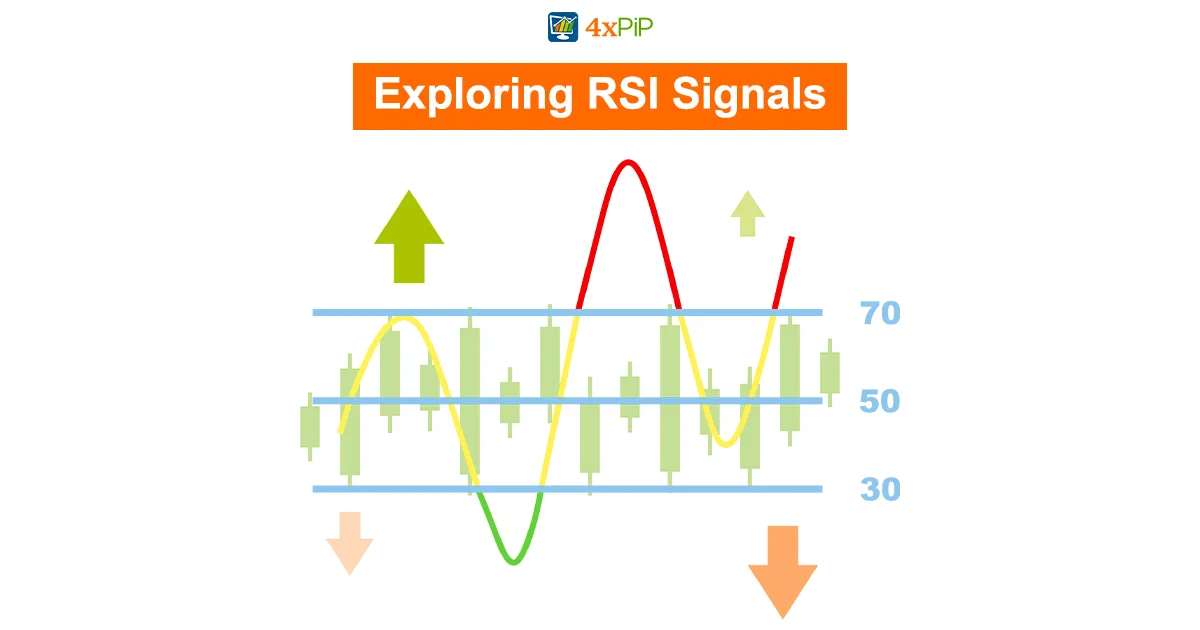In trading, it’s important to grasp indicators like the Relative Strength Index (RSI). At 4xPip, we’re here to help traders with useful insights and tools. Reach out to our experts at [email protected].
Exploring RSI Signals:

Clear Buy and Sell Signals:
The RSI is part of popular trading tools and gives clear signals to help you make smart decisions. Both beginners and experienced traders find it easy to use.
User-Friendly and Compatible:
The RSI is easy for traders of any experience level to use. It works well with other indicators, making predictions more accurate. If you use it with a Bollinger band, you can spot good times to buy.
Navigating RSI Weaknesses:
Risk of False Signals:
In situations where there isn’t much trading activity or when unexpected news comes out, RSI signals might not be reliable. Traders need to carefully study how the market is moving, especially if they’re trading against the usual direction.
Lagging Indicator and Limited Opportunities:
RSI is not always quick to show signals in fast-changing markets, so you might miss chances or face losses. Unlike moving averages, RSI gives fewer trading opportunities, so you need to be patient in different markets.
Challenging Loss Exit:
RSI can stay too high or too low for a long time, leading to big losses. Using stop-loss is important in trending markets to control possible downsides.
Strategies for Maximum Profit:
Initiating Buy and Sell Trades:
Traders should base Buy decisions on favorable RSI signals, considering market trends and economic data. Similarly, Sell trades should align with RSI indicators, combined with a comprehensive analysis.
Maximizing Profit and Adjusting Metrics:
To make more money, traders should smartly set their stop-loss, take-profit, and lot size. This means understanding the market well and being ready for possible risks.
RSI for Swing Traders:
Swing traders like using RSI because it doesn’t give too many signals and works well for longer trades. It helps find when to buy or sell, but it’s best used as part of a full trading plan.
Conclusion:
The RSI is useful, but it works best when used with other strategies. At 4xPip, we recommend combining RSI with different indicators and analysis methods to make smart trading choices. Check out our trading insights and tools on our website at 4xpip.com.
Successful trading isn’t just about one tool; it’s about using different indicators together. Contact the experts at 4xPip for personalized help and check our products for better trading. Email our customer support at [email protected] for more info.












